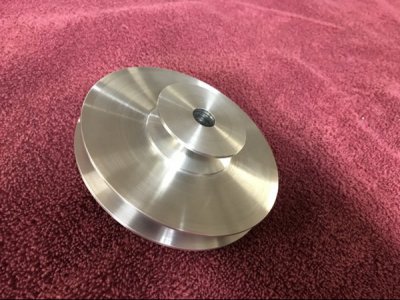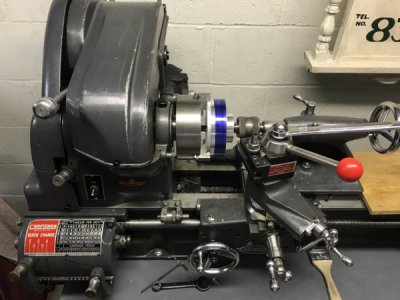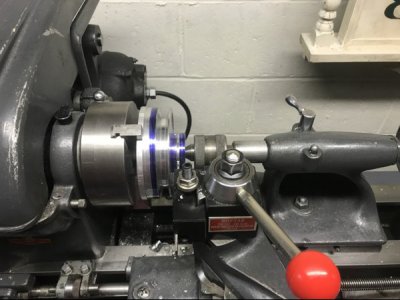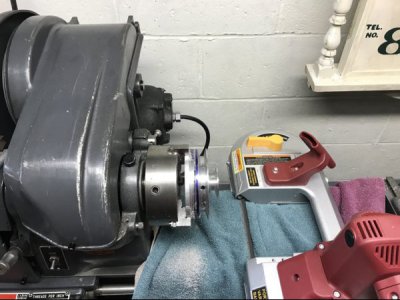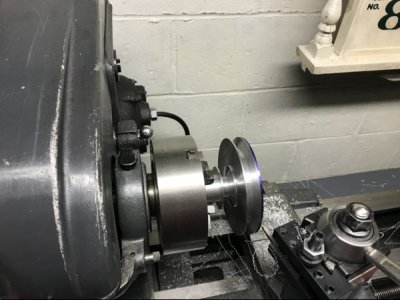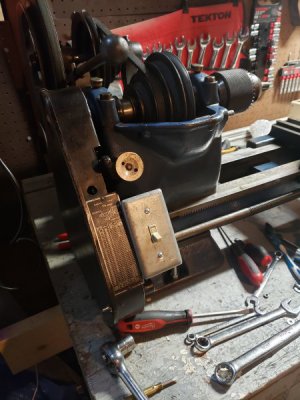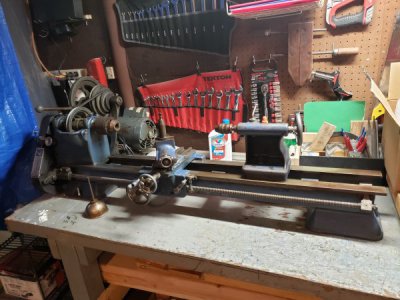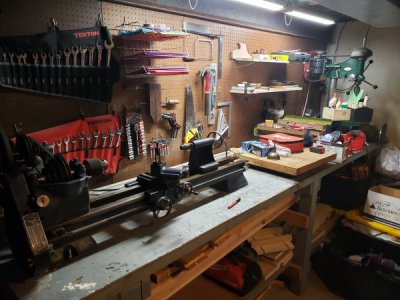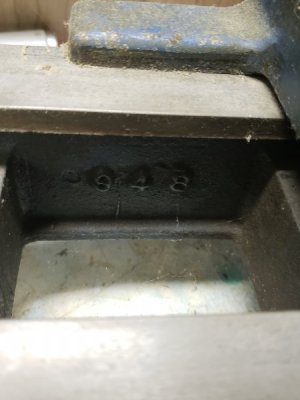If the lathe was made in 1936, it should have babbit bearings and if it has back gears, should be a 101.07380. It would have come with a 9-428 motor pulley for 1/2" shaft. If the current motor is a 56 frame, it will have a 5/8" shaft, which would explain why he didn't keep the original motor pulley. Although if he had been smart, he could have used a temporary motor pulley and converted the 9-428 to a 10-428.
There are ways to determine the probable motor HP but most require a dynamometer. I would assume it is probably just assume that it is probably a 1/2 HP and just run it. Incidentally, if it doesn't have a name plate, how do you know that it's a 56 frame?
If you can, post a front view photo and the serial number from the right end of the front way.
